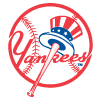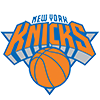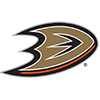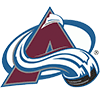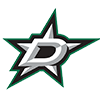This week, I decided to do something a bit different for my column.
Over the years I have worked in baseball, people have asked me a number of common questions. I'd like to take this column to answer some of them. And please feel free to use the comment section below to ask me anything that you may have been wondering yourself. Maybe I'll include your question in a future column.
So, here are some questions people have asked me:
1. Does the MLB logo represent any particular player?
The late Harmon Killebrew, a tremendous Hall of Fame player for the Twins, lived in Scottsdale, Ariz. I often saw him at social and baseball gatherings.
We got to talking about the MLB logo. I had heard he was the profile on the logo. I asked if it is true?
Killebrew turned to the side and said, "What do you think?" I told him it looks just like him. He said I was right. He indicated he was told many times that he, indeed, was the profile on the logo.
So the next time you see the MLB logo, think Harmon Killebrew.
2. How do I get to work in baseball?
I'm asked this constantly. My answer is changing.
Years ago, the answer would be that you had to know someone in the game and prove your competency or earn that person's trust.
While that still helps, many jobs have changed. Statistics and video have overtaken personal scouting as the
This week, I decided to do something a bit different for my column.
Over the years I have worked in baseball, people have asked me a number of common questions. I'd like to take this column to answer some of them. And please feel free to use the comment section below to ask me anything that you may have been wondering yourself. Maybe I'll include your question in a future column.
So, here are some questions people have asked me:
1. Does the MLB logo represent any particular player?
The late Harmon Killebrew, a tremendous Hall of Fame player for the Twins, lived in Scottsdale, Ariz. I often saw him at social and baseball gatherings.
We got to talking about the MLB logo. I had heard he was the profile on the logo. I asked if it is true?
Killebrew turned to the side and said, "What do you think?" I told him it looks just like him. He said I was right. He indicated he was told many times that he, indeed, was the profile on the logo.
So the next time you see the MLB logo, think Harmon Killebrew.
2. How do I get to work in baseball?
I'm asked this constantly. My answer is changing.
Years ago, the answer would be that you had to know someone in the game and prove your competency or earn that person's trust.
While that still helps, many jobs have changed. Statistics and video have overtaken personal scouting as the focal point of player procurement and evaluation. As a result, proficiency in statistical analysis is of paramount importance. Statistics generally consume the work of public relations staff.
And remember, these tips below pertain to both males and females. Many roles are opening in baseball organizations for females.
Select a team or teams you wish to work for and concentrate on connecting with them. It is best to keep contacting those teams on a fairly regular basis. Offer to intern. Prove your knowledge. Show data that may be unique, and something nobody has tracked. Be creative. And be persistent. Offer to work for no salary. Show your personality in your communications.
If you get no response, move on to the next team on your list. Don't just give up.
The best place to start is at the minor league level. You may have to pick players up at the airport. You may have to run errands. Do whatever it takes, but get to know the staff. Minor league personnel often catch the eye of the affiliate organization. Do whatever job, for no money or for whatever money you are offered.
Be willing to help. Chip in. Volunteer. And don't ever think you know more than those people who work with the club, even if you do.
If you can, create a resume of accomplishments and head to the Winter Meetings. They are held every December. Register for the job fair and employment seminars. Dress professionally.
And always remember to find the name of the person in the department where you seek employment. Don't contact the Media Relations Department or Scouting Department. Find the name of the person in charge. Or find a staff member in the department. Be personal. Be specific. Do some research. And be specific about your skills and be ready to prove them.
And if your hand writing is legible, send an email and then follow it up with a hand written or printed personal letter to that same person. It will make you stand out. It will be different from all the rest of the in-box inquiries they get. Personal letters still work.
You have nothing to lose by reaching out to the department where you want to work for the team you wish to work for. But be patient. Don't give up without trying.
3. What's it like being in a major league press box?
Life is much quieter in a press box than one may realize.
There clearly isn't much banter back and forth. Friends gather at dinner in the team provided dining room before the game. During the game, everyone is working. There are television monitors spread among the rows of seats. Usually, team media are assigned to the front row. The sound is inoperable on the TV sets.
Visiting media are usually assigned to the second row and beyond. In many press boxes, radio hosts are separated from writers.
Most press boxes have operable windows. Some don't. With closed windows, every sound of the game is muffled. Much of the "feel of the game" is lost.
Before the pandemic, most clubs provided complimentary snacks. In Phoenix, after about the fourth inning, we got hard pretzels or nachos on alternating nights. Popcorn was available every night, as well as coffee, water and fountain drinks.
Before the pandemic, pre-game dinners were provided in the media dining room for a fee. Club personnel didn't pay. In Phoenix, I have seen the dinner price escalate almost every year.
Due to the pandemic, there are no dining room meals or snacks served as yet. Media may bring their own food.
Complete hot dinners and a salad/soup bar were always available. There are a variety of entrees, and most are good. There was always a freezer with frozen ice cream sundaes and/or cookies for dessert. The freezer remains open during the game, so sundaes are available. All the cookies are usually gone by the second inning.
And during the pandemic, in Phoenix our press box is about one-fourth filled, if that. As of last week, social distancing and masking still take place.
Media personnel gain weight during the season eating food at the park. That's a fact. Since the pandemic began, I have lost 36 unwanted pounds. My wife has guided my weight loss with fabulous, nutritious meals, but not eating ball park food has really helped. I am returning to the press box now, but with a totally different mind set if, and when, the media dining room reopens.
The Angels and the White Sox have moved the press box from behind home plate to down the right-field foul line, so they can sell seats in the location where the press box was once located. Other clubs may have done that recently as well. Many press boxes have shrunk, like the one in Colorado. Fewer seats, less space.
Some press boxes are really up high, with the one in Washington the highest that I can remember.
At Dodger Stadium, Vic Scully and the TV/radio guys had a private little dining room. Scully would provide pre-game highlights for the video board that played as fans entered the stadium. Right after the game, he would leave privately and without any interference from anyone. He is still a legend. Properly so, he is treated as a legend.
I remember seeing Vic Scully in our Phoenix media dining room every Dodgers series when he still traveled with the team. He would often wear his powder blue Dodgers sport coat and he was a friendly and as kind as could be.
While Hall of Famers and high-profile former players and stars from every walk of the entertainment world often congregate in the media dining room before a game, one never asks for an autograph. Never. Ever. Regardless of who the person may be.
Muhammad Ali would often attend Diamondbacks games. While everyone wanted to engage in conversation with him or ask him to sign this or that, we all stayed away and gave him his space and due respect. But let me tell you, he was electric. Just being in his presence and seeing that huge smile and listening to him address his entourage was incredible.
Clubs provide the media with "game notes" and updated game data before every game.
Recently, the amount of printed data has been reduced, and more clubs rely on the media using devices to obtain the information.
Scouts use the media dining room and the lounge areas behind the dining room before the game. They then leave the area and go to scout seats, which are provided mostly in areas behind home plate. In Phoenix, the scout area is directly behind the screen behind the plate. That is not always the case. Some teams place scouts elsewhere.
All media must have a credential to enter the stadium and then the credential is shown again to enter the media area. No MLB provided credential, no entry.
Please don't share this, because I am speaking out of school. In many press boxes, if a no-hitter is in progress, media pay a dollar or so to pick a card from the ace to the 9. The card holder with the card corresponding with the place in the lineup that gets the first hit wins the pot. I don't know what happens in the event the no-hitter is completed. I have never seen a no-hitter pitched in person. Not in my younger days as a fan sitting in the stands or in my media days in the press box. Never. I've seen plenty on television, but never in person. I've won the pot many times.
4. What is it like in a major league clubhouse?
Not all media members have access to the major league clubhouses. One must have a specific clubhouse designation to gain access.
There is a guard outside both the visitors and home team clubhouse to check the credential and permit access.
There is usually a time before the game when the clubhouse door says "OPEN" — but it closes before gametime. Access time is limited. Some teams limit time more than others.
The manager usually has a small office adjacent to the clubhouse. He may or may not meet media there. Many managers meet media before the game in a "media room" located near the clubhouse. Many meet media in the dugout before the game. It depends upon the manager.
The home team clubhouse is more lavish. It is bigger and more spread out than the visitor clubhouse. Even the lockers are smaller in the visitors clubhouse.
In the visitors clubhouse, it is not unusual for the most senior and/or star players to have a locker separate from the rest of the team. Those one or two lockers are sort of off to the side. Same goes for the home team clubhouse, but there may be more room for the home team stars. And some stars or high-profile players may get more than one locker, with more privacy.
In most clubhouses, pitchers' lockers are separated from position players. Coaches have a separate short wall of lockers. The manager changes in his office.
There are usually soft sofas, chairs and a table or two for card games and the like in the clubhouse. There is always a huge TV that is turned to a baseball game or channel.
Starting lineups and umpire assignments will be posted on the wall. Special instructions are also posted (the time the bus leaves, etc.) as are MLB rules and regulations. Including gambling rules.
Media are not permitted to sit on the sofas or chairs. Media gather outside a player's locker if they wish to speak to the player. On some clubs, interview requests must be made through the public relations or media relations department, most especially for star players. However, after most games, players may choose to make themselves available for interviews without an appointment or scheduling.
Bowls of candy and gum adorn the shelves adjacent to the television. Of course, all food is off limits to the media.
The exercise equipment and fitness areas are adjacent to the clubhouse. Most have separate rooms dedicated to therapy, weight training and the like.
There is a separate dining area in both clubhouses. Visiting teams usually have their meals catered by a restaurant. There is a dedicated, league approved chef in every home clubhouse.
Clubhouse attendants are there to assist players and uniformed staff. They are the folks that handle the uniform laundry, shoe shining, etc. They are invaluable personnel that help keep the team functioning smoothly.
A tunnel usually leads from the clubhouse to the field. Some clubhouses are closer to the field than others.
Yes, women media members are permitted in the clubhouse. Players do return from the shower wearing only a towel, but the women media are used to that. I have seen at least one player parade around without a towel when a female reporter was in the clubhouse. I was shocked at his behavior. The woman wasn't amused, and just walked away. I have only seen that once. And I don't think his teammates appreciated it.
While I have seen my share of card games in clubhouses, what I normally see is guys preparing for batting practice and the game. They are in and out of the exercise and fitness areas and chatting with one another.
I have seen players watching game video before the game. That is really not unusual. I have also seen a player shopping online when it was his turn to hit in batting practice. His coach had to come and get him. The players are human.
Scouts are not permitted in the clubhouse or on the field before the game.
A winning clubhouse generally celebrates with loud music. A losing clubhouse is more somber, though I have seen losing clubhouses that have been louder than one might expect.
There is a "cooling off" period after games. Media are asked to wait outside for some 10 minutes or so, sometimes more, before they may enter the clubhouse.
HEADING HOME
The proliferation of no-hitters doesn't bother me. What bothers me is the lack of contact being made in the game. Is the softer baseball to blame for the no-hitters? I don't think so.
Hitters are being rewarded handsomely for home runs. Pitchers are bigger, stronger and throw harder. They also have mastered the changeup, which has fooled many, many hitters this season. The softer baseball doesn't matter if a hitter can't make contact.
• Hats off to Albert Pujols. He is making a contribution to the Dodgers. I'm glad to see that.
• If you would like to ask a question similar to those above, or anything else, please let me know in the comments section below. If my readers like an occasional question column, I'm happy to write them.
• Thanks for following me on Twitter @BerniePleskoff and for reading my work at Forbes.com.










